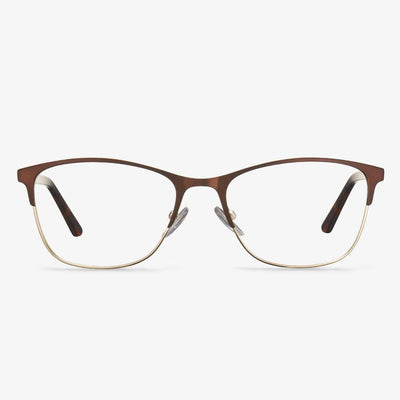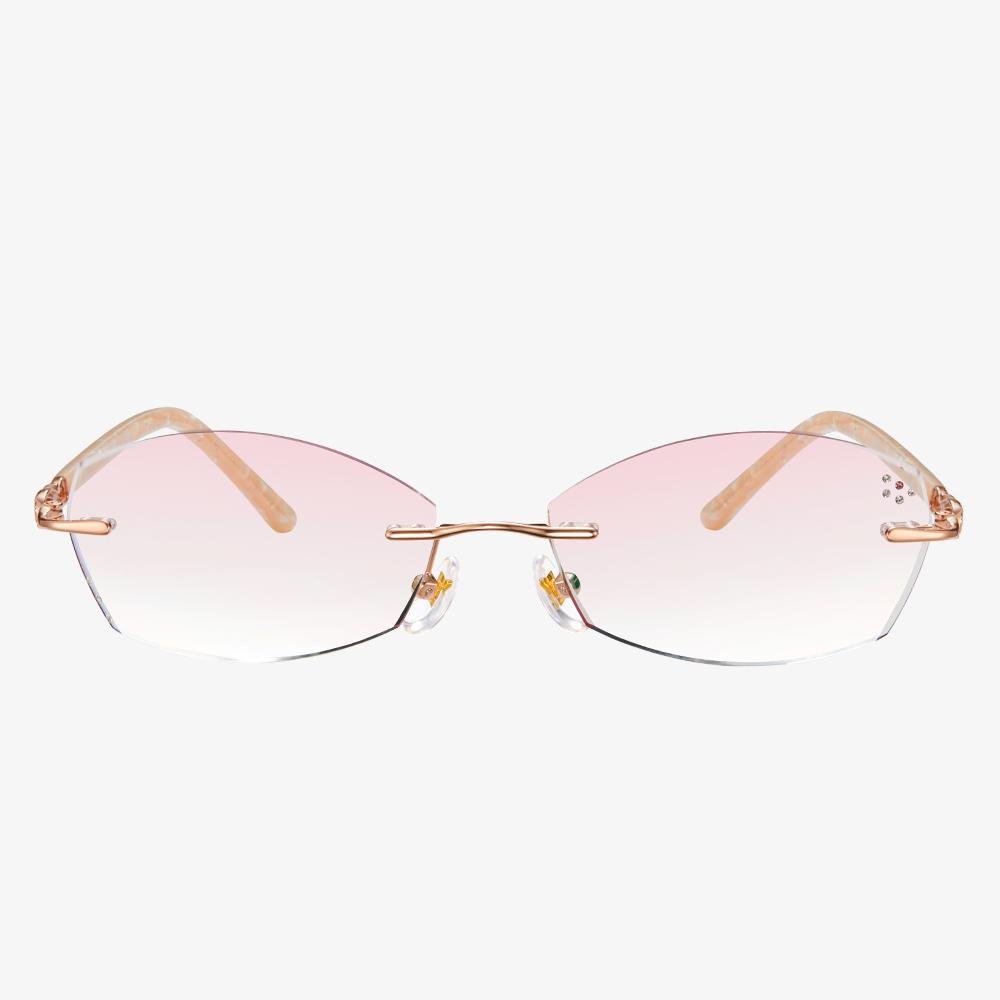How to maintain a hard-coated lens?
The hard-coated resin lenses can be identified by the sound of the tabletop tapping and the color brightness of the lenses. The lenses, which sound clear and have bright edges, are hardened. In daily use, avoid overheating environment. Avoid contacting with alkaline liquid, so as not to cause damage to the lens. And this damage is usually not formed in an instant.
Long-term use, sun exposure, and so on may make the coating slowly fall off. If the production of hard film technology is worse, the film is easier to fall off. When cleaning and adding a hard-coated lens, clean the particles on the front and rear surfaces of the lens with clean water first, and then blot dry with a clean soft cloth. Do not wipe the surface when the lens is dry.
Pay attention to the color of your blue-blocking glasses.
For children, their lenses are relatively clean and clear, and the blue light transmittance is higher than that of adults, which is more harmful to the eye. On the complementary color principle of optics, a good pair of blue light glasses should not be deep orange, but light yellow. The complementary color to cyan is orange. So, in order for the glasses to absorb blue light and filter it out, they must appear blue's complementary color yellow, otherwise, they violate the optical principle of absorbing blue light.
The history of chromatic contact lenses
Chromatic contact lenses, commonly known as color Lens, is a kind of Soft hydrophilic Contact Lens, belongs to the third category of medical devices. In 1971, Bausch & Lomb introduced the world's first pair of soft contact lenses. Before this, contact lenses are made of hard materials, with poor comfort, difficult to promote. Soon after, CIBA Vision made the lenses aqua blue to make them easier for users to operate. There were also special contact lenses with dark loops on the lenses, which were designed to help people with injured or defective eyes, like corneal white spots or iris defects, to conceal flaws, forming artificial pupils, so they were called beauty lenses.
Then, in the 1980s, American company Wesley Jessen (later bought by VisiCon) introduced the FreshLook chromatic contact lens, which used laser technology to print colored patterns onto the lens to change the color of the wearer's iris. Since then, contact lenses have been developed from a simple vision correction tool into a cosmetic with the effect of beauty makeup. It can brighten, enlarge, darken or change the color of the iris of the eye. At present, the common chromatic contact lenses are black, brown, gray, purple, blue, green, and so on. There are also a variety of color combinations or some special patterns.
What Are the Disadvantages of High-Index Lenses?
This section will show high index lenses disadvantages.
- High index lenses are made from a chemical synthetic blend that’s created through a special manufacturing process. So, high index lenses are expensive than regular lenses. In fact, the price may be more than double that of the traditional counterparts.
- High index lenses can be more brittle than their traditional counterparts and may also be more prone to scrapes and scratches. This can impact their overall durability.
- High index lenses are more reflective than regular lenses, which can make them less effective for brightly lit work environments, outdoor use and nighttime driving on busy highways.
- High index lenses have greater potential for distortion, particularly in your peripheral vision because the high index lenses have a higher Abbe value than prescriptions made from standard plastic or glass.
Palo Alto
They are not heavy. The glasses are not heavy at all and robust and are well-suitable. The prescription is perfect. These rimless metal glasses have a bronze finish and a perfectly rounded lens. The slender metal arms finish, and the turtle arm tips and spring hinges, make the glasses simple but stylish.
Evolution of hard coating technology
The first generation of the use of hard coating technology began in the early 1970s, the quartz material is deposited on the surface of a resin lens under vacuum conditions, form a very hard anti-wear film. However, due to the mismatch between the thermal expansion coefficient and the film base material, it is easy to delaminate and crack the film. Instead, it forms the mottle on the surface of the lens, and the effect is not optimal.
The second generation of hard coating technology is the use of the 1980s. The surface of the resin sheet is coated with a material with high hardness and not easy to be brittle and cracked by an immersion process. At this time, anti-reflection coating lenses had appeared and gained the recognition of consumers, but the mismatch between adding hard coating and anti-reflection coating still caused serious lens wear.
The third generation of hard coating technology was developed in the 1990s, mainly in order to solve the problem of wear resistance after coating resin lenses with an anti-reflection film. The hardened material evolved into a polymer organic matrix material.
Fourth-generation coating technology is dominated by silicon atoms, in which the hardened solution contains both organic substrates. It contains inorganic ultrafine particles, including silicon elements, which make the hard coating not only tough but also hard.
Can night driving glasses prevent blue light?
Night driving glasses are called night vision goggles. Some night-driving glasses have anti-reflective coatings. Night driving glasses reduce glare by scattering and filtering blue light. Blue light is the shortest wavelength in the spectrum and is possible to cause glare when it enters the eye. The night driving glasses, available in colors from yellow to amber, filter out a lot of glare, and other light, and then make it difficult to see in dark conditions. But tests and studies have shown that night driving glasses don't improve night vision or help drivers see pedestrians faster than they won’t wear them.











































